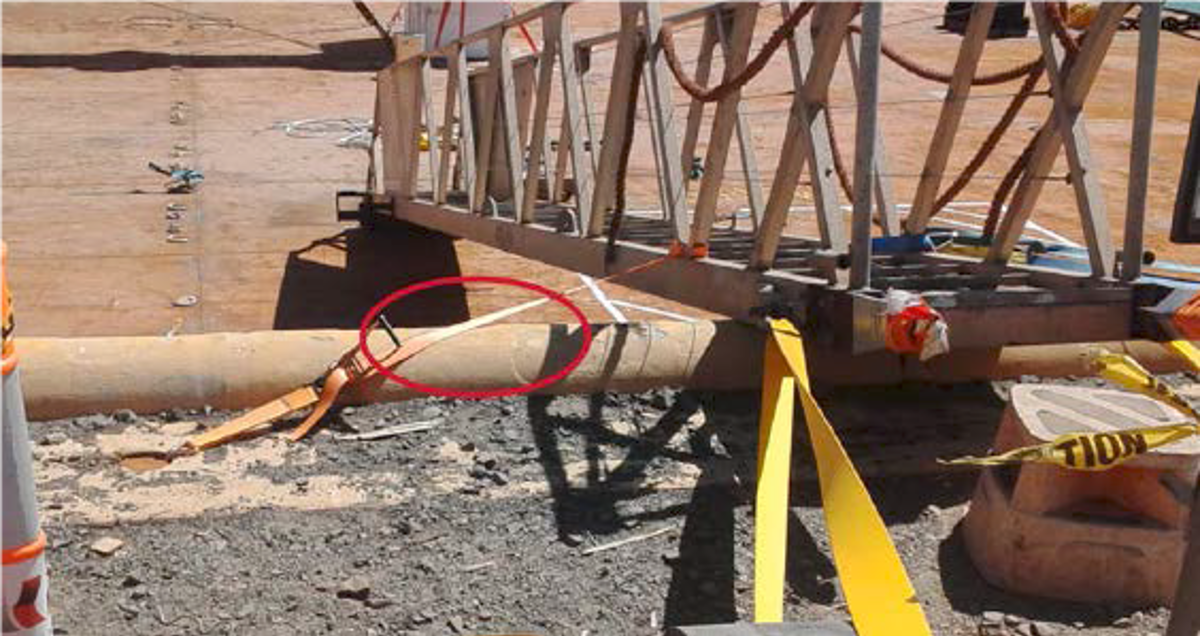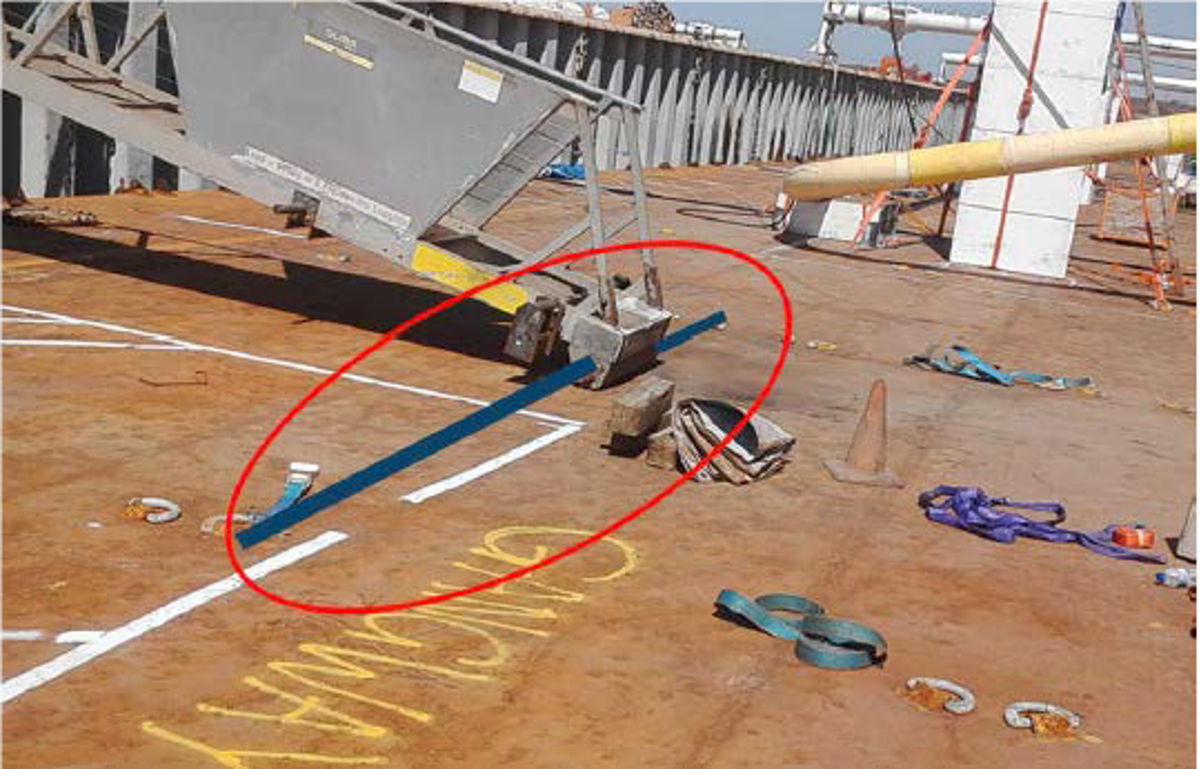Third-party high potential near miss – dropped gangway
- Safety Flash
- Published on 14 December 2018
- Generated on 13 December 2025
- IMCA SF 27/18
- 2 minute read
Jump to:
During barge operations at a spool fabrication yard, a high potential near miss occurred when a gangway positioned between the quayside and barge fell 2.4m, landing on the barge.
What happened?
At the time of the incident, there were no personnel in the vicinity of the gangway. However, only minutes earlier, personnel had been using the gangway to access the barge.
What went wrong? What were the causes?
- The method used to secure the gangway securing took no account of a tidal range of 7.5m.
- The position of the cargo straps securing the gangway on the quayside meant that the straps were in direct contact with the quayside edge, an abrasion point, at low tide.
- The task was perceived as ‘routine’; the personnel involved did not identify the potential for the cargo straps being exposed to an abrasion point and thus failing.
- The gangway was designed with a roller on its lower end to enable free movement, but this was incorrectly secured, producing tension and failure of the upper securing method.
- Inspections of the gangway were conducted; however, they failed to identify the potential for the quayside cargo straps to be exposed to abrasion, or that the gangway had been secured at both ends.
What lessons were learned?
- A task risk assessment should consider and assess the following:
- identification and communication to all stakeholders to establish who is responsible for setting up, monitoring and inspecting gangways
- expected tidal changes and potential vessel movements (due to sea state/weather/vessel traffic in the vicinity) when setting up and securing gangways
- appropriate rigging of gangways (gangways which are designed to be free moving are not to be secured at the roller end and should have sufficient space to travel and accommodate the tidal range and any barge movements)
- regular inspection of the gangway to include free movement of any rollers, checking that the securing method is free from obstructions and abrasion points.
Members may wish to refer to:
IMCA Safety Flashes summarise key safety matters and incidents, allowing lessons to be more easily learnt for the benefit of the entire offshore industry.
The effectiveness of the IMCA Safety Flash system depends on the industry sharing information and so avoiding repeat incidents. Incidents are classified according to IOGP's Life Saving Rules.
All information is anonymised or sanitised, as appropriate, and warnings for graphic content included where possible.
IMCA makes every effort to ensure both the accuracy and reliability of the information shared, but is not be liable for any guidance and/or recommendation and/or statement herein contained.
The information contained in this document does not fulfil or replace any individual's or Member's legal, regulatory or other duties or obligations in respect of their operations. Individuals and Members remain solely responsible for the safe, lawful and proper conduct of their operations.
Share your safety incidents with IMCA online. Sign-up to receive Safety Flashes straight to your email.

